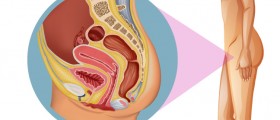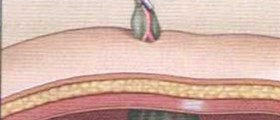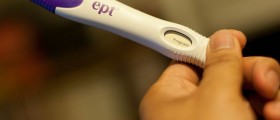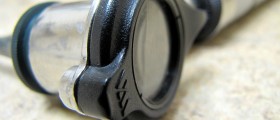
IUD removal is a routine and uncomplicated procedure that can cause only minor discomfort. It is usually removed at the expiration date or if a woman plans to conceive.
What Is IUD?IUD or intrauterine device is a form of birth control. It is a small, T-shaped device made of flexible plastic that is placed into the uterus to prevent pregnancy. Unlike birth control pills, IUD is a safe and long-term birth control method. The device protects against pregnancy for 5-10 years and then it has to be removed and replaced. The intrauterine device is inserted into the uterus through the cervix opening. It can be placed at any phase of the menstrual cycle although the best time to insert it is following menstruation when the cervix is the softest. There are two types of intrauterine device: copper (ParaGard) and hormonal (Mirena). Mirena works by releasing small amount of progestin into the uterus. Progestin thickens the cervical mucus and prevents sperm form entering the cervix. It also prevents ovulation. Hormone IUD is effective for 5 years. Copper IUD releases small amount of copper into the uterus and protects against pregnancy by preventing sperm to fertilize the egg. It also prevents fertilized egg from implanting in the uterus. ParaGard is effective for 10 years.
Disadvantage of IUDIntrauterine device does not protect against sexually transmitted diseases. IUD is associated with several side effects. Common side effects include: heavy and painful periods, spotting in between periods, irregular periods, breast tenderness, acne, headaches and nausea. Rare complications associated with IUD are: infections and perforation of the uterus. IUD is not recommended for all women. IUD should not be used by women with history of pelvic infection, HIV/AIDS, leukemia, cervix cancer, uterus cancer, heart disease, history of ectopic pregnancy or history of toxic shock syndrome.
IUD RemovalIntrauterine device can be removed at any time. However, during menstrual bleeding when the opening of the cervix is wide and soft is the best time to remove IUD. IUD must be removed by a doctor who first has to examine the uterus to locate the strings of the device. Then, by using a clamp he grasps the strings and carefully and slowly pulls the device at a certain angle through the cervix. During removal of IUD, a patient experiences minimum discomfort. Sometimes the cervix must be dilated and IUD removed with forceps. If the doctor can not locate the string of the intrauterine device, he must use ultrasound to examine the uterus. If the test shows that the device is embedded into the uterus, surgery is necessary to remove IUD. Generally, removal of intrauterine device is less painful than IUD insertion. Some women may experience vaginal spotting for short period of time after removal of the device. It is important to remember that women should never try to remove intrauterine device themselves. Removal of IUD by nonprofessionals can cause severe damage such as perforation to the uterus that may result in internal bleeding.
















_f_280x120.jpg)
Your thoughts on this
Loading...